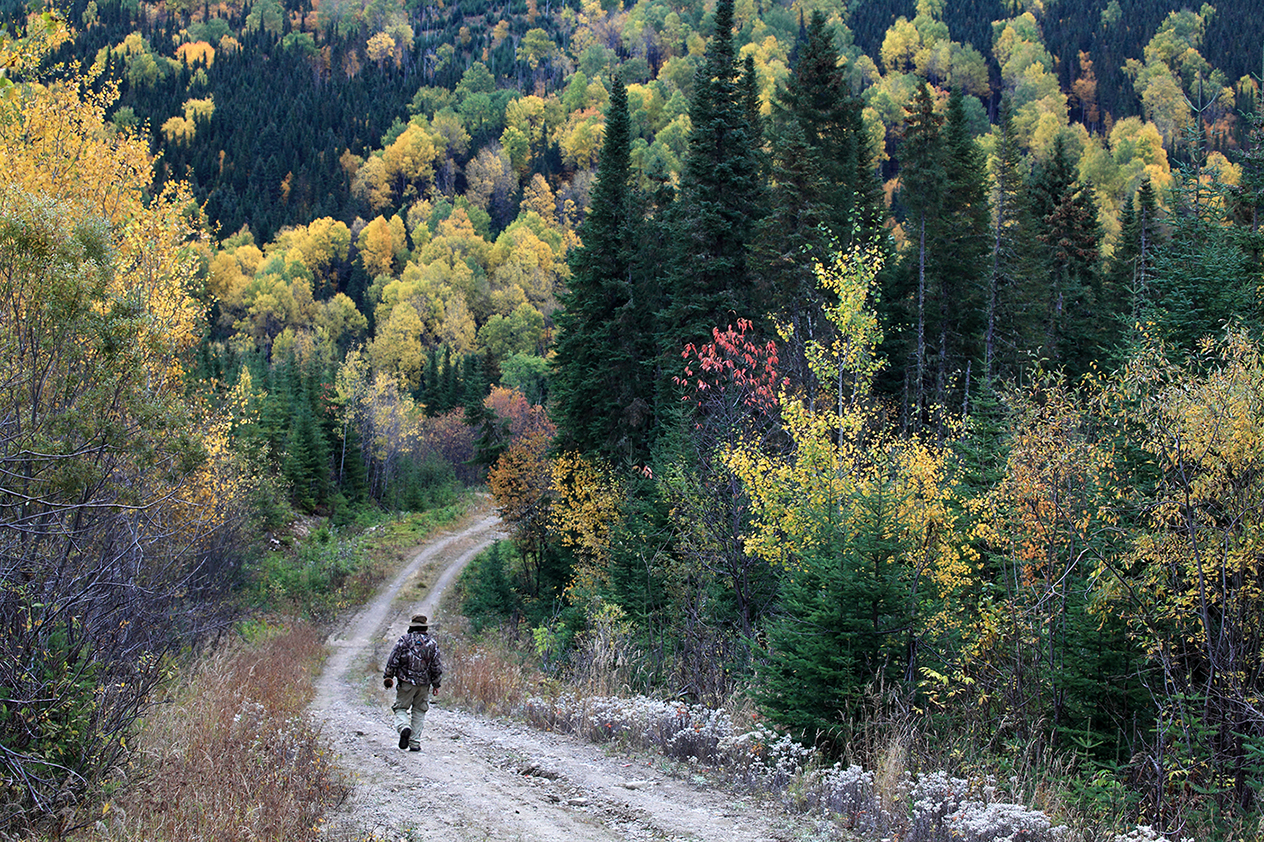
Pierre Vaillancourt is no ordinary guide. Wolves, he tells me, are his speciality, which has earned him the nickname of Pierre Le Loup, or Peter Wolf. It would be hard to imagine a more fitting name for a man so remarkably in tune with nature. Dressed in camouflage and speaking in tones of hushed excitement, he parks the vintage school bus he uses for wildlife-watching tours and leads me on foot deep into the Forêt Montmorency (foretmontmorency.ca), still cloaked in the silence of dawn. Every rustle in the trees, every fleeting shadow on the hillside sets our senses on high alert. ‘Look, the moose were here,’ he whispers, pointing to fresh tracks on the sandy trail. Our gaze skims the horizon expectantly, but it seems the moose are keeping a low profile.
Just as I am beginning to resign myself to a no-show, it happens. We spy a moose grazing in a forest glade. ‘It's a small one,’ says Pierre. ‘Fully grown bulls can be up to 2m tall and they have massive antlers up to 1.5m wide.’ A small moose it may be, but even from a distance it seems astonishingly huge and more than a touch comical – an odd-looking, goofy-faced cartoon of an animal. As if on cue, more moose start to arrive as day breaks and a perfect arc of a rainbow illuminates the seemingly never-ending forest. A larger specimen gives us a peek at his 800kg of might and muscle, before shying away from our zoom lenses and disappearing into the thicket with surprising nimble-footedness.
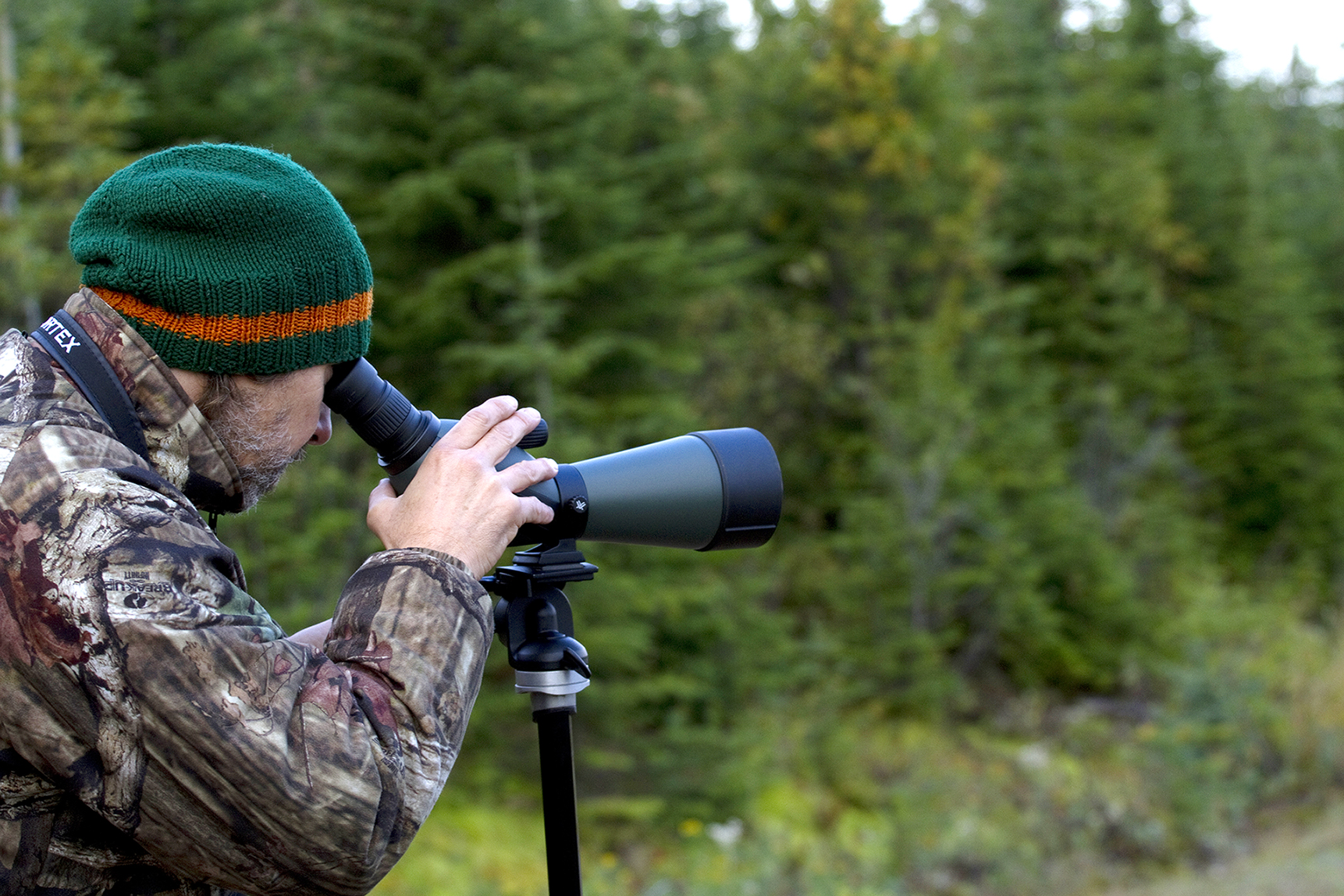
Managed by the Université Laval, the Forêt Montmorency is one of the biggest forest research projects in the world, and it spreads out in all its green glory just 70km north of Québec City. Civilization, however, feels a million miles away. Wildlife is as varied as it is prolific in this 412-sq-km expanse of boreal forest, sprinkled liberally with black bears, timber wolves, beavers, otters, foxes, 140 species of birds, and porcupines. ‘You can fool porcupines into thinking you are one of their own,’ says Pierre, imitating the squeaky grunt of the prickly rodent. ‘Give it a try and they might come running to you and climb up your leg mistaking it for a tree,’ he says with a grin.
At a watchtower rising high above the tree canopy, Hugues Sansregret, the director of the Forêt Montmorency project, sheds some light onto moose behaviour. ‘During the peak rutting season from late September to early October, it can get quite noisy with all the bellowing and clattering of antlers,’ he admits. ‘The moose give it their best shot to impress the ladies. The female calls and one comes clambering down the mountain, crushing the trees and branches in its path. It's kind of like, “Hi, honey, I'm almost home. Wait for me...”’
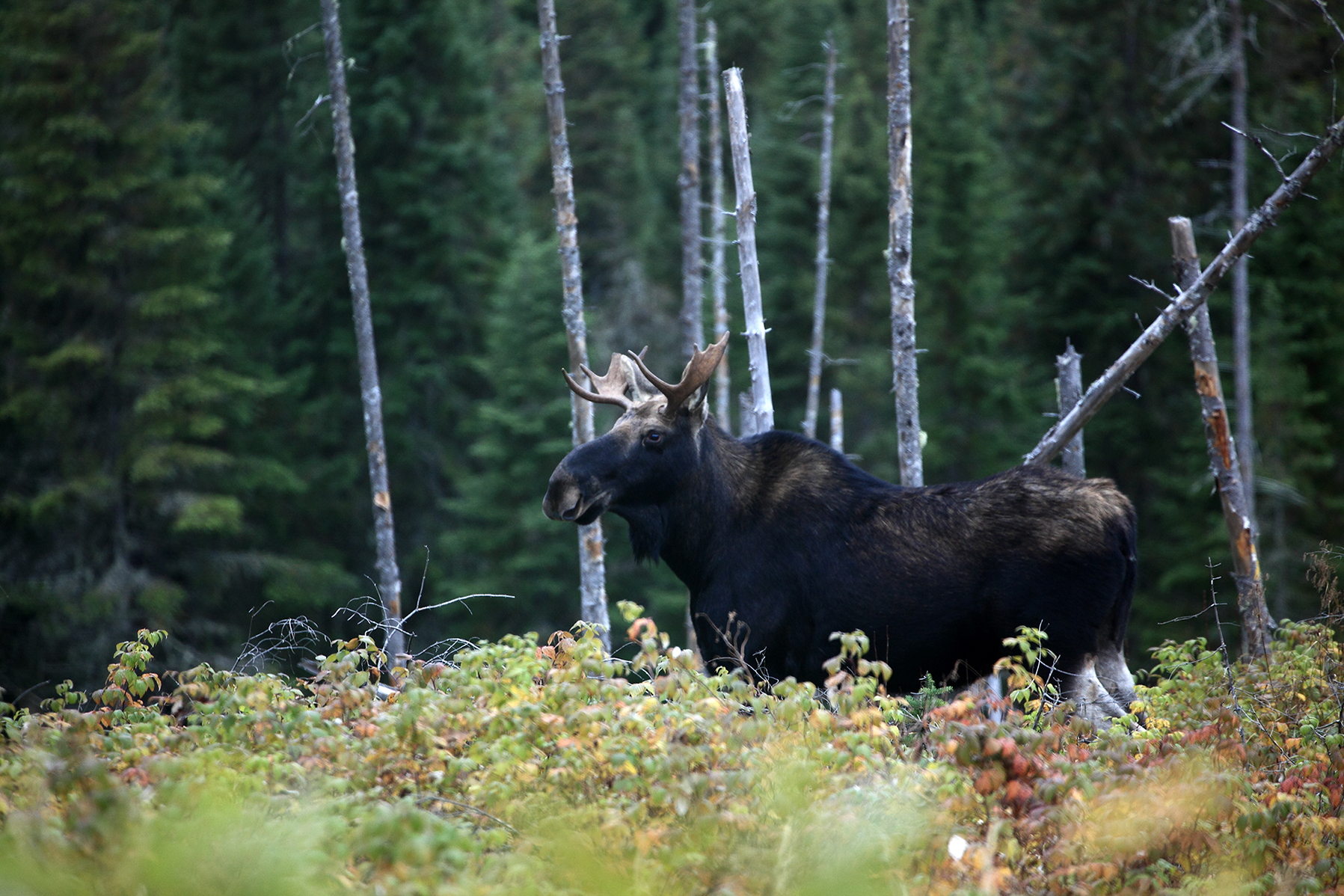
But the Forêt Montmorency isn't the only place where visitors can experience Québec's wildlife. Following the course of the St Lawrence River north to where it meets the Saguenay Fjord brings me to the Baie Ste-Catherine, the gateway to the vast Saguenay–St Lawrence Marine Park (parcmarin.qc.ca). One of the world's whale-watching hotspots, this is where blue, minke, humpback, fin and endangered beluga whales come to frolic from May to October, feasting heartily on an abundance of shrimp and krill. There are a number of marine-watching cruises that go into the bay in Zodiac boats and according to our skipper, the chances of spotting whales are pretty much guaranteed.
A fiery sunrise has given way to the silver light of early morning, making it difficult to determine where the broad river ends and the sky begins. The spitting rain stops and a pale sun hangs tentatively in the sky as we bounce off in search of the biggest mammals on the planet.
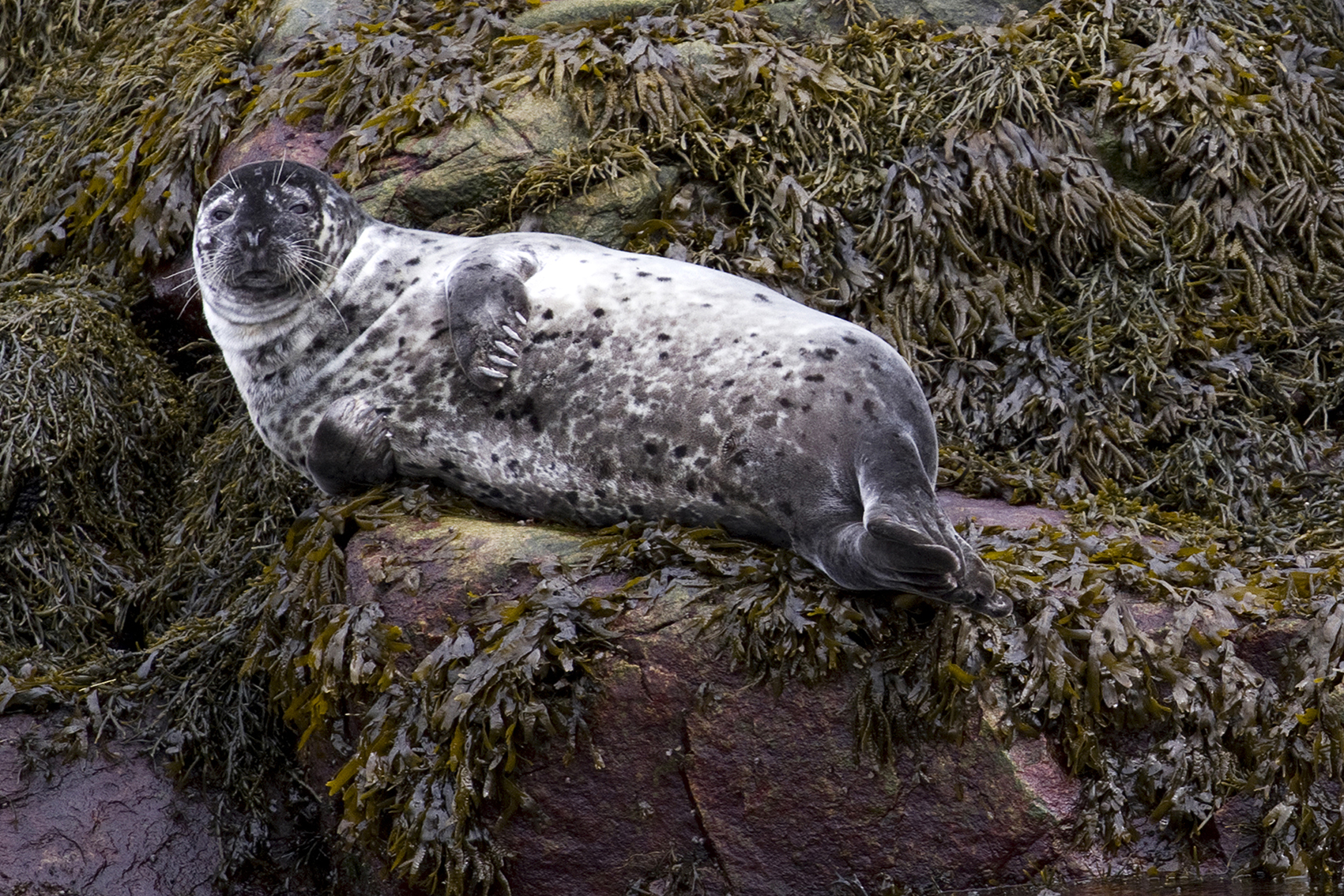
Within minutes of leaving the harbour, the skipper draws my attention to a dark speck on the horizon, the sight of which holds my eyes transfixed while my hands lunge for my camera. Sure enough, a dorsal fin soon emerges from the water, followed by a terrific spout and a dive, which leaves me guessing where the whale will appear next. It is a fin whale, the skipper tells me. One of nature's giants, fin whales are the second-largest mammal on earth, with an average length of 20m and weight of around 60 tons. It isn't until you encounter these marine giants first hand that you can even begin to appreciate quite how enormous they really are.
We pick up speed as we continue across the bay, with spray lashing the sides of the Zodiac, slowing down every so often to glimpse grey and harbour seals out for a morning swim, their slick heads bobbing above the water, or sprawled out on the rocky shoreline as if posing for the camera. Further out, white belugas splash around in the blissful solitude of the steely water – we can only admire them from a respectful distance because of their protected status, the skipper informs me.
Heading back to harbour, a humpback sidles in close to the boat and treats us to a spectacular flash of its tail before disappearing into the depths. ‘Three O’Clock,’ someone gasps excitedly, and I turn just in time to hear the almighty whoosh of the whale and see the spout of mist that elicits a chorus of ‘wows’. And faced with nature on such a grand scale, it is frankly the only word that comes to mind.
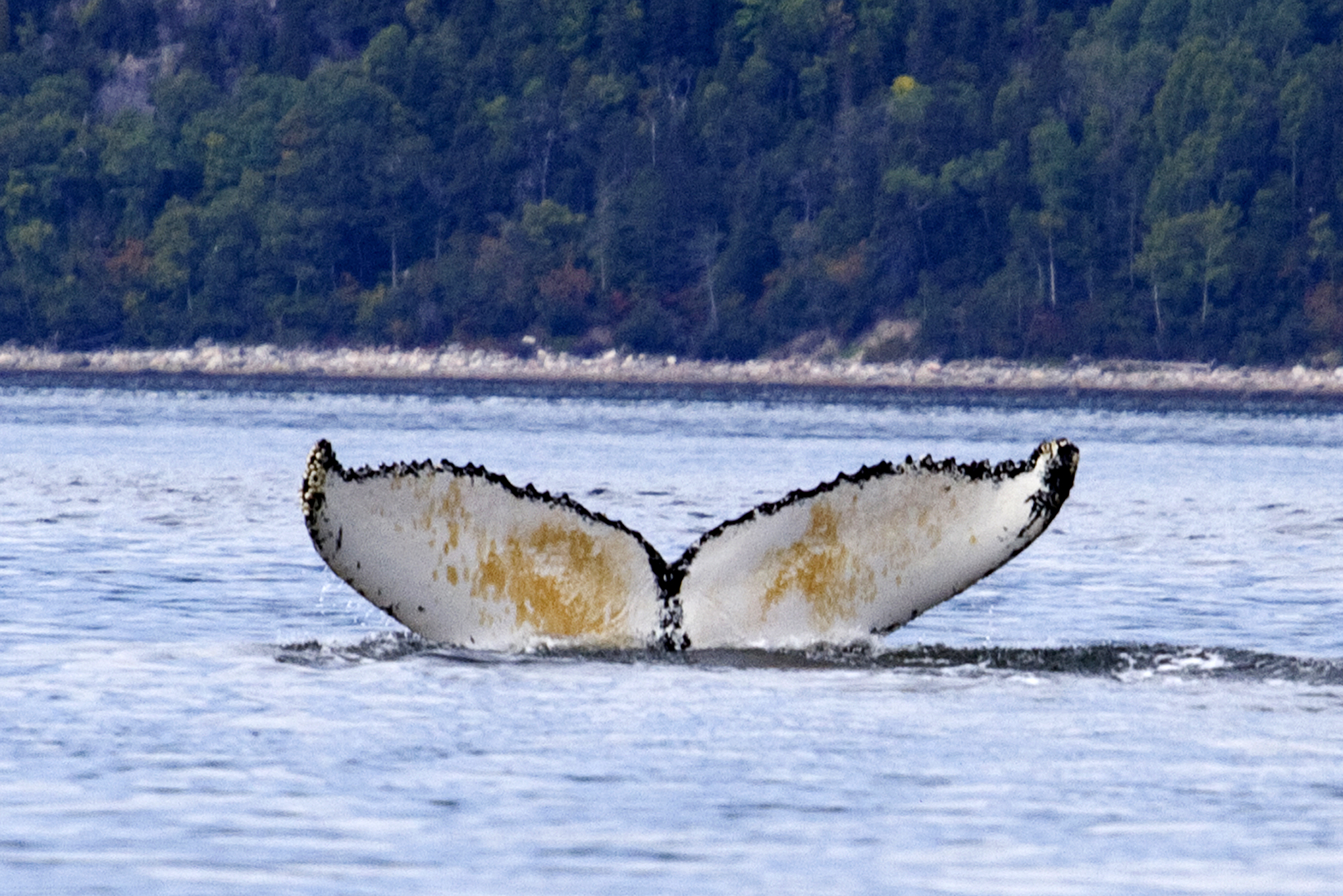
Five Other Québec Wild Wonders